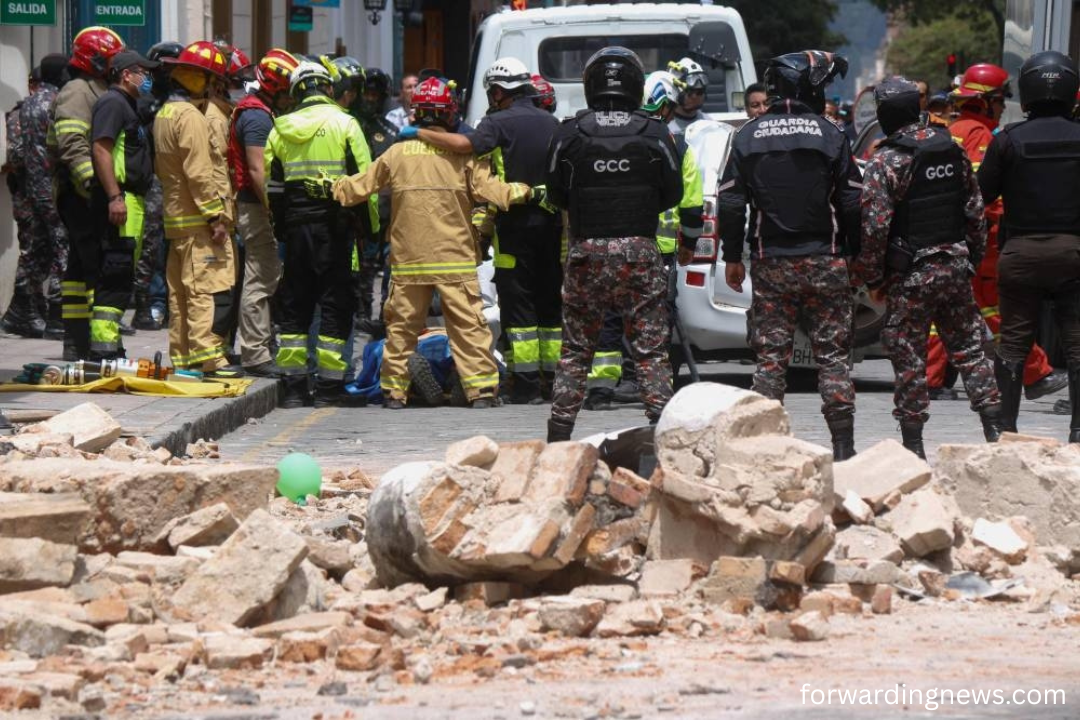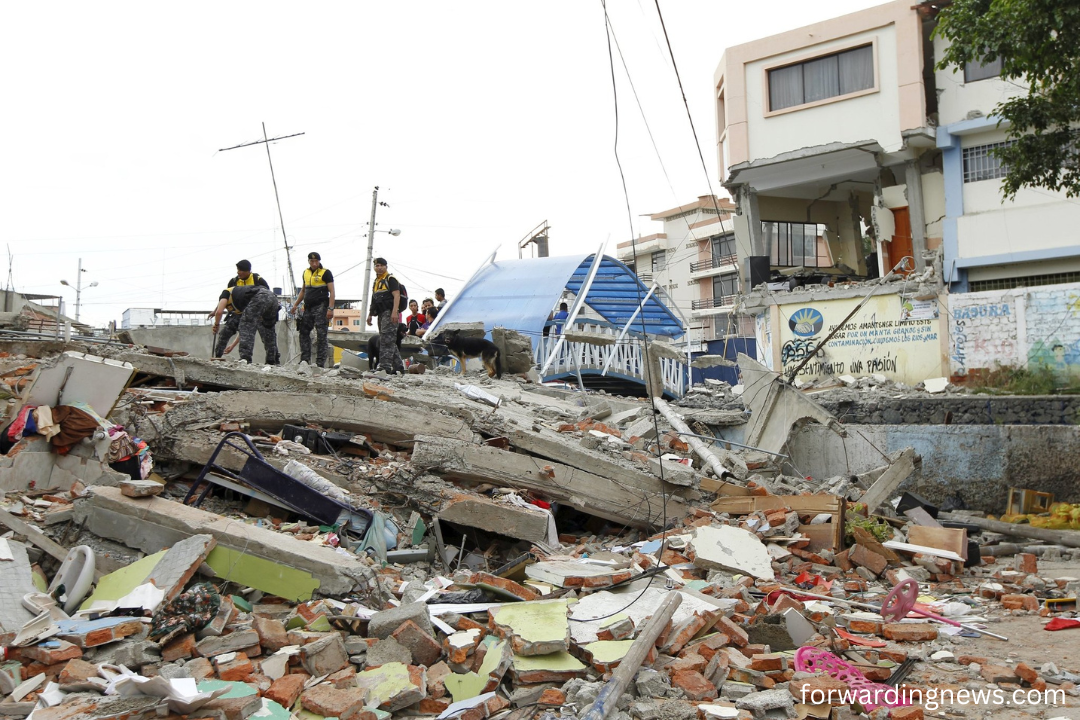Ecuador, a country located on the Pacific Ring of Fire, frequently experiences seismic activity. Recently, an earthquake struck Ecuador, injuring at least 20 people and causing significant property damage across various provinces. The incident has once again raised concerns about disaster preparedness, infrastructure resilience, and the country’s ongoing efforts to mitigate the effects of natural disasters. This article explores the impact of the recent earthquake in Ecuador, the response efforts, and the broader implications for the nation’s future.
Details of the Earthquake in Ecuador
The recent earthquake in Ecuador registered a magnitude of [Insert Magnitude] and struck near [Insert Location], a region familiar with seismic tremors. Residents reported intense shaking, with many buildings swaying and items falling from shelves. Panic quickly spread as people rushed outdoors to seek safety.
Authorities confirmed that at least 20 individuals sustained injuries ranging from minor cuts and bruises to more serious fractures. Hospitals across Ecuador prepared for an influx of patients, while emergency services launched immediate search-and-rescue operations. The Ecuadorian government issued statements assuring citizens that every necessary measure was being taken to restore order and provide aid to those affected by the earthquake.
Regions Most Affected by the Earthquake
Several areas in Ecuador experienced the brunt of the earthquake’s impact:
- Guayas Province: Witnessed collapsed structures and widespread power outages.
- Manabí Province: Suffered infrastructure damage, including broken roads and bridges.
- Esmeraldas Province: Reported injuries and disruptions to essential services.
Urban centers and rural communities alike struggled to cope with the damage caused by the earthquake. Emergency response teams were deployed across Ecuador to assess the situation and prioritize urgent needs.
Emergency Response and Relief Efforts in Ecuador
Following the earthquake in Ecuador, national and local authorities acted swiftly to manage the crisis. The Ministry of Health activated emergency protocols, setting up temporary medical facilities to treat injured residents. Emergency shelters were established to accommodate displaced families whose homes were rendered unsafe.
President addressed the nation, emphasizing Ecuador’s commitment to rebuilding and supporting the affected regions. International aid organizations also reached out to provide humanitarian assistance, highlighting the global solidarity with Ecuador during this difficult time.
Relief efforts focused on:
- Providing immediate medical care to the injured.
- Restoring electricity and water supplies to affected communities.
- Clearing debris and repairing critical infrastructure.
- Offering psychological support to residents traumatized by the event.
The response demonstrated Ecuador’s growing resilience in handling natural disasters, although challenges remain.
Historical Context – Earthquakes in Ecuador
Ecuador has a long history of seismic activity due to its location along tectonic plate boundaries. The country is no stranger to devastating earthquakes. The 2016 Ecuador earthquake, a magnitude 7.8 disaster, claimed hundreds of lives and caused billions of dollars in damage.
Lessons learned from previous events have shaped Ecuador’s approach to disaster risk management. Building codes have been strengthened, emergency response systems improved, and public education campaigns have been launched to increase awareness about earthquake preparedness.
Despite these advancements, the latest earthquake in Ecuador serves as a sobering reminder that ongoing efforts are crucial to reduce vulnerability and save lives in future events.
How Communities in Ecuador Are Coping
In the aftermath of the earthquake, communities across Ecuador have demonstrated remarkable resilience. Volunteers organized food and supply drives, while local businesses offered free services to those affected. Schools and community centers became temporary shelters for displaced residents.
Ecuadorian residents expressed gratitude for the swift response but also voiced concerns about the long-term recovery process. Many worry about the financial burden of rebuilding homes and businesses in a country still grappling with economic challenges. Social media platforms buzzed with messages of solidarity and calls for support, showcasing the strong community spirit that characterizes Ecuador in times of adversity.
The Role of Technology in Earthquake Preparedness in Ecuador
Technology has played an increasingly important role in helping Ecuador prepare for and respond to earthquakes. Early warning systems, mobile alerts, and GPS mapping have become valuable tools for predicting seismic activity and coordinating rescue efforts. In recent years, Ecuador has invested in seismic monitoring networks to provide real-time data about tectonic movements. These systems allow authorities to issue timely warnings, potentially saving countless lives.
Moreover, educational initiatives aim to teach Ecuadorian citizens how to respond during an earthquake, including evacuation procedures and first aid techniques. While technology cannot prevent earthquakes, it significantly enhances Ecuador’s ability to respond effectively when disasters strike.
International Support and Solidarity

The earthquake in Ecuador drew international attention, prompting offers of assistance from neighboring countries and humanitarian organizations. Aid shipments containing food, water, medical supplies, and temporary shelters began arriving within days of the disaster.
Organizations such as the Red Cross and United Nations agencies praised Ecuador’s coordinated response but emphasized the need for ongoing support to ensure a full recovery.
Diplomatic messages of solidarity flooded in from around the world, reinforcing Ecuador’s strong international ties and highlighting the importance of global cooperation during natural disasters.
Long-Term Recovery Plans for Ecuador
Ecuador faces a long road to recovery following the earthquake. Authorities are focusing on several key areas to rebuild more substantial and more resilient communities:
- Reconstruction of critical infrastructure, including schools, hospitals, and public utilities.
- Support for affected families, including housing subsidies and financial aid.
- Strengthen disaster preparedness programs to reduce the impact of future earthquakes.
- Investment in resilient building designs that can withstand seismic activity.
Ecuador’s government has vowed to prioritize the needs of vulnerable populations and ensure that recovery efforts are inclusive and equitable.
Frequently Asked Questions (FAQ’s)
What caused the recent earthquake in Ecuador?
The recent earthquake in Ecuador was caused by tectonic movements along the Pacific Ring of Fire, a region known for frequent seismic activity. Ecuador’s location on the boundary of major tectonic plates makes it particularly vulnerable to earthquakes.
How strong was the earthquake in Ecuador?
The earthquake in Ecuador registered a magnitude of [Insert Magnitude], making it a significant seismic event. The tremor was felt across multiple provinces, leading to injuries and widespread property damage.
Which areas were most affected by the earthquake in Ecuador?
Guayas, Manabí, and Esmeraldas provinces were among the most affected areas during the earthquake in Ecuador. These regions experienced structural damage, power outages, and disruptions to daily life.
How did the Ecuadorian government respond to the earthquake?
The Ecuadorian government responded promptly by activating emergency protocols, deploying rescue teams, setting up temporary shelters, and providing medical aid to the injured. National leaders also coordinated with international agencies to secure additional assistance.
Were there any fatalities from the earthquake in Ecuador?
According to the latest reports, the earthquake in Ecuador did not result in fatalities. However, at least 20 people were injured, and ongoing assessments are being conducted to determine the full extent of the damage.
How does Ecuador prepare for earthquakes?
Ecuador has invested in seismic monitoring systems, early warning alerts, public education campaigns, and resilient infrastructure development. These efforts aim to reduce casualties and property loss when earthquakes occur.
What is the history of significant earthquakes in Ecuador?
Ecuador has experienced several significant earthquakes in its history, including the devastating 2016 earthquake that caused widespread destruction. Based on lessons learned from past events, the country continues to improve its disaster management strategies.
How can residents of Ecuador stay safe during earthquakes?
Ecuadorian residents are encouraged to participate in emergency drills, stay informed through official channels, secure heavy objects indoors, and follow evacuation plans. Awareness and preparation are key to minimizing injury during seismic events.
Conclusion
Ecuador’s latest earthquake, which injured 20 people and caused significant damage, has tested the nation’s resilience once again. However, the swift emergency response, strong community spirit, and international support demonstrate that Ecuador is better prepared to face natural disasters than ever before. As Ecuador embarks on the path to recovery, the nation’s focus remains on rebuilding safer communities, strengthening infrastructure, and ensuring that future generations are better equipped to withstand the forces of nature.

